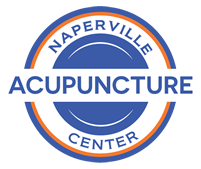You may have heard that acupuncture is one of the only therapies that actually stimulates the body’s healing ability. You may already know this means it can reduce pain, increase range of motion, help tissue heal, and benefit overall health. However, if you are like most people, you are probably wondering how acupuncture actually works. How can such a simple thing as a needle create such powerful effects? You may also be wondering if acupuncture involves some mystical or energetic component. Our goal is to share the underlying mechanisms of acupuncture, making it accessible to as many people as possible.
The short answer:
- Acupuncture helps to reduce pain locally where the needles are inserted and throughout the body.
- Acupuncture has a calming effect and produces well-being.
- Acupuncture inactivates myofascial trigger points.
- Acupuncture has effects on the brain.
- The effects of acupuncture accumulate when repeated.
The longer answer:
Although acupuncture is a mystery to most people, its effects are actually well-understood. A prominent researcher, Professor Bruce Pomeranz, has stated that “We know more about acupuncture analgesia than we know about many chemical drugs in routine use. For example, we know very little about the mechanisms of most anesthetic gases, but still use them regularly.” (Pomeranz, B: Acupuncture analgesia-basic research. In Stux G, Hammerschlag R, editors: Clinical acupuncture scientific basis, Berlin, 2001, Springer).
The effects of acupuncture can be at least partially explained through at least 5 known biological mechanisms. Below is a very abbreviated guide to some of the known mechanisms of how acupuncture works.
- Local Effects – Acupuncture produces many effects by stimulating nerve fibers in the muscles and skin. Various neuropeptides are released when the acupuncture needles are inserted. This cause the local blood vesels to dilate, which increase the local blood flow. The increased blood flow encourages tissue healing.
- Segmental Analgesia – Action potentials (nerve signals) are transmitted upwards along the nerve to a particular segment of the spine. When the spine receives this signal, it works to turn off pain where the needle is inserted, but also in other areas that are controlled by this segment. For this reason, needles in the hand and wrist can be used to turn off pain in the neck.
- Extrasegmental Analgesia – After the signals from the needles are transmitted to the spine, they travel along to the brain. Here, they stimulate another pain suppressing mechanism. The brain inhibits pain sending a message downwards through the spine and throughout the whole body.
- Central Regulatory Effects – Deeper structures within the brain are also affected by the acupuncture stimulation, including the hypothalamus and limbic system. These parts of the brain produce the feelings of calmness and euphoria that acupuncture is famous for, and also help regulate the internal organs.
- Myofascial Trigger Points – A myofascial trigger point is a “taut band,” or a rubbery knot felt within the muscle, often in the neck and back. These are areas of contracted muscle tissue which constrict blood and nerve flow. They can be caused by tension, stress, overuse, poor posture, and many other factors. They can cause pain where they are but can also radiate pain into other areas. Needling the trigger points is one of the most effective ways to break up the trigger points, and can be quite effective in relieving pain!
What about Meridians and Energy?
In traditional acupuncture, the areas for acupuncture treatment consist of specific points located along “meridians.” The word “meridian” was chosen as a translation for the Chinese term “jingluo.” This term actually refers to the blood vessels. The ancient Chinese had a thorough understanding of the circulatory system. The acupuncture points represent concentrations of blood vessels and related nerves. “Qi” (pronounced “chee”) has many meanings in Chinese, including breath, weather,and activity. It does not mean “energy.” The original understanding of acupuncture was as a method used to stimulate the flow of blood to the limbs and organs.
Sources: Biomedical Acupuncture for Pain Management: An Integrative Approach, Dao of Chinese Medicine: Understanding an Ancient Healing Art, An Introduction to Western Medical Acupuncture

